Can science blow up a balloon?
In this easy science experiment, kids can explore how matter behaves when heated and cooled. Watch our demonstration video, gather your materials, print out your instruction sheet to get started. Then, discuss your findings with our easy to understand explanation of how it works below.

JUMP TO SECTION: Instructions | Video Tutorial | How it Works
Supplies Needed
- 8-inch Balloon
- Empty 2-Liter Bottle
- 2 pans (I used 9-inch square pans)
- Enough Ice & Cold Water to Fill one Pan
- Enough Hot Boiling Water to Fill another Pan
Can a Bottle Blow up a Balloon Lab Kit – Only $5
Use our easy Can a Bottle Blow up a Balloon Lab Kit to grab your students’ attention without the stress of planning!
It’s everything you need to make science easy for teachers and fun for students — using inexpensive materials you probably already have in your storage closet!
Use a Bottle to Blow-up a Balloon Science Experiment Instructions
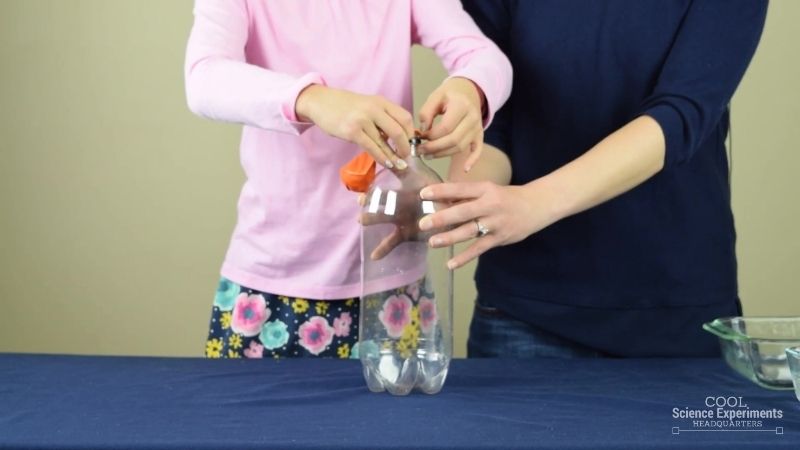
Step 1 – Start with an empty two-liter bottle and secure a balloon around the mouth of the bottle. Helpful Tip: 8-inch balloons work best for this experiment. When we tried this with a 10-inch balloon, it didn’t inflate entirely.
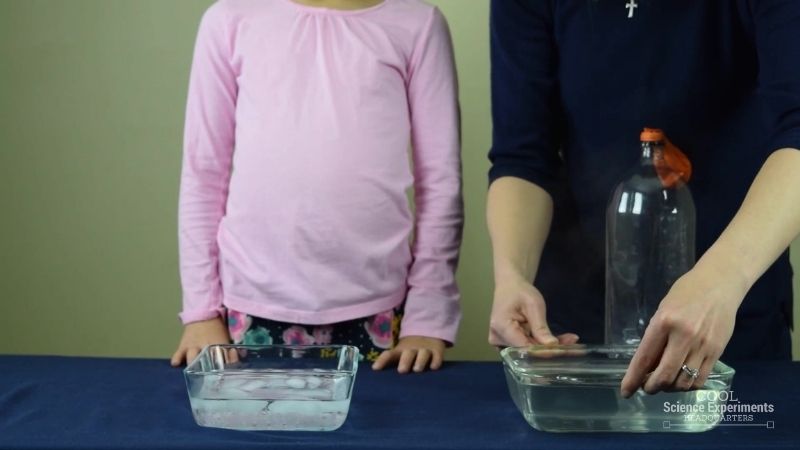
Step 2 – Prepare two pans of water. Fill one pan with ice and cold water. Fill the other pan with hot boiling water. What do you think will happen if you place the bottle in the pan with the hot water? What do you think will happen if you place the bottle in the pan with the cold water? Write down your hypothesis (prediction) and then follow the steps below.

Step 3 – Place the bottle in the pan with the hot water. Hold it in the pan for 30-40 seconds. Watch what happens to the balloon and make some observations. Does the balloon inflate? What do you think will happen if you remove the bottle from the pan with the hot water?

Step 4 – Remove the bottle from the hot water and place it on the table for a few seconds. Notice that the balloon stays inflated. What do you think will happen if you put the bottle in the pan with the cold water? Is this different than your first prediction?
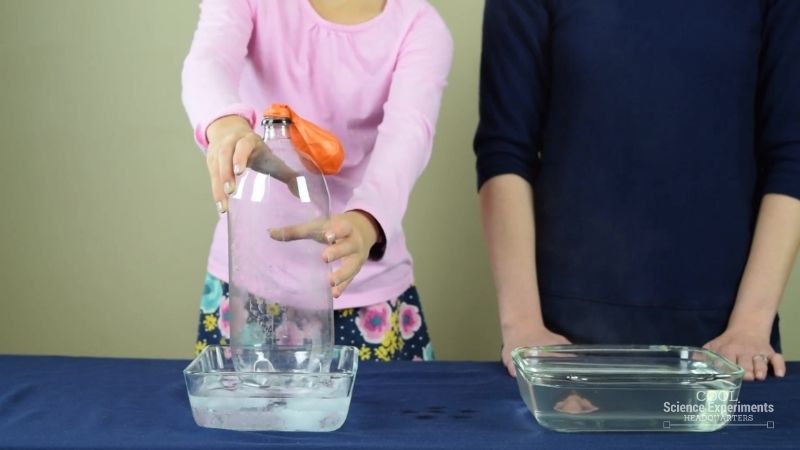
Step 5 – Place the bottle in the pan with the cold water. Hold it in the pan for 30-40 seconds. Watch what happens to the balloon and make some observations. Does the balloon deflate? What do you think will happen if you remove the bottle from the pan with the cold water?
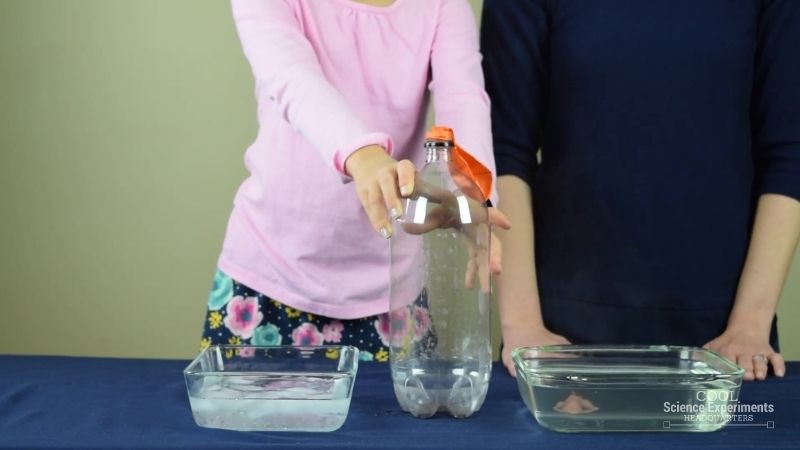
Step 6 – Remove the bottle from the cold water and place it on the table. The balloon will remain deflated.
Do you know the why the balloon inflated and deflated throughout the experiment? Find out the answer in the how does this experiment work section below.
Video Tutorial
How to Blow Up a Balloon with a Jar Science Experiment Step by Step Instructional Video
How Does the Science Experiment Work
Even though the bottle looks empty, it is actually filled with air. By placing the balloon on top of the bottle, you trap the air inside of the bottle. This experiment is a great way to show how matter behaves when it is heated and cooled. Matter expands (gets bigger) when heated and contracts (gets smaller) when cooled.
When the bottle is placed into the pan of hot water, the heat from the water causes the air inside the bottle to heat up. As the air in the bottle heats up, the molecules of the air begin to move faster and take up more space. The air from the bottle then moves into the balloon causing it to inflate.
When the bottle is removed from the hot water, the balloon will stay inflated. This is because the air molecules in the bottle are still hot. If you leave the bottle out of the water for a while, it will eventually cool down. When the air in the bottle cools down, the molecules of air slow down, move closer together, and take up less space. This will cause the balloon to deflate.
When the bottle is placed into the pan of ice-cold water, the cold water causes the air inside the bottle to cool down. As the air in the bottle cools down, the molecules of the air slow down and take up less space because they move closer together. The air then moves out of the balloon and back into the bottle, causing the balloon to deflate.
More Science Fun
Want to learn more about what air can do? Then check out these other simple and fun experiments:
- Stab a Straw through a Potato – Yes, it really is possible and it’s all because of Air Pressure
- Upside down Water Glass – Turn a glass full of water upside down…without spilling a drop!
- Keep Towel Dry Under Water – Use simple science to keep the paper towel dry after submerging it in water
Can a Bottle Blow up a Balloon Lab Kit – Only $5
Use our easy Can a Bottle Blow up a Balloon Lab Kit to grab your students’ attention without the stress of planning!
It’s everything you need to make science easy for teachers and fun for students — using inexpensive materials you probably already have in your storage closet!
I hope you enjoyed the experiment. Here are some printable instructions:
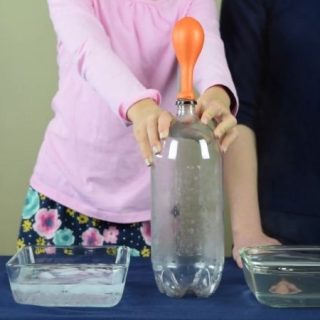
Use a Bottle to Blow-up a Balloon Science Experiment
Materials
- 8 inch Balloon
- Empty 2 Liter Bottle
- 2 pans (I used 9inch square pans)
- Enough Ice & Cold Water to Fill one Pan
- Enough Hot Boiling Water to Fill another Pan
Instructions
- Start with an empty two liter bottle and secure a balloon around the mouth of the bottle. Helpful Tip: 8inch balloons work best for this experiment. When we tried with a 10inch balloon, it didn’t inflate entirely.
- Prepare two pans of water. Fill one pan with ice and cold water. Fill the other pan with hot boiling water.
- Place the bottle in the pan with the hot water. Hold it in the pan for 30-40 seconds and watch the balloon inflate.
- Remove the bottle from the hot water and place on the table for a few seconds. Notice that the balloon stays inflated.
- Place the bottle in the pan with the cold water. Hold it in the pan for 30-40 seconds and water the balloon deflate.
- Remove the bottle from the cold water and place on the table. The balloon will remain deflated.
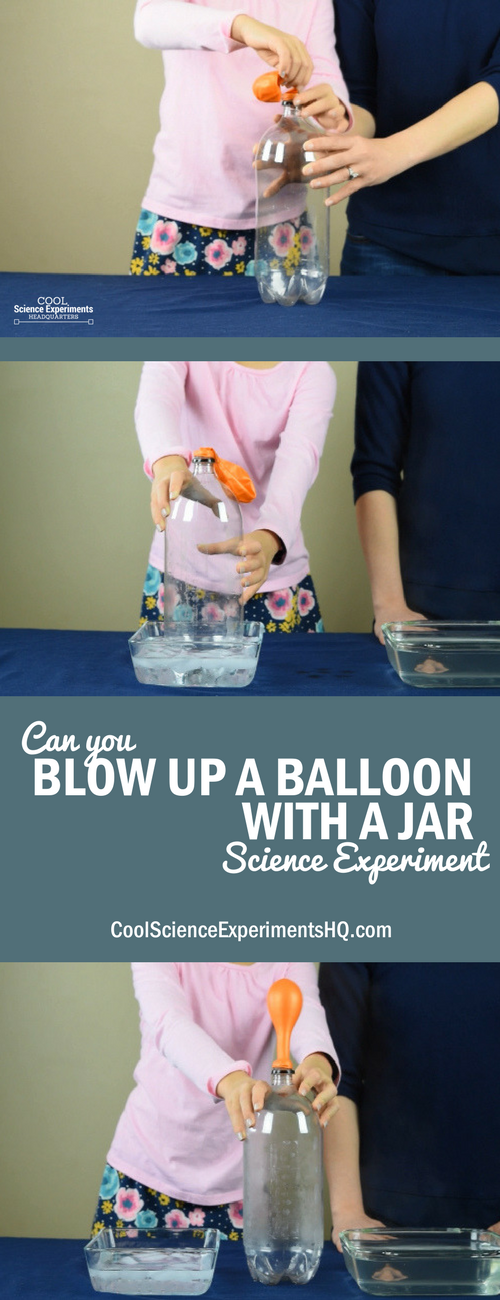
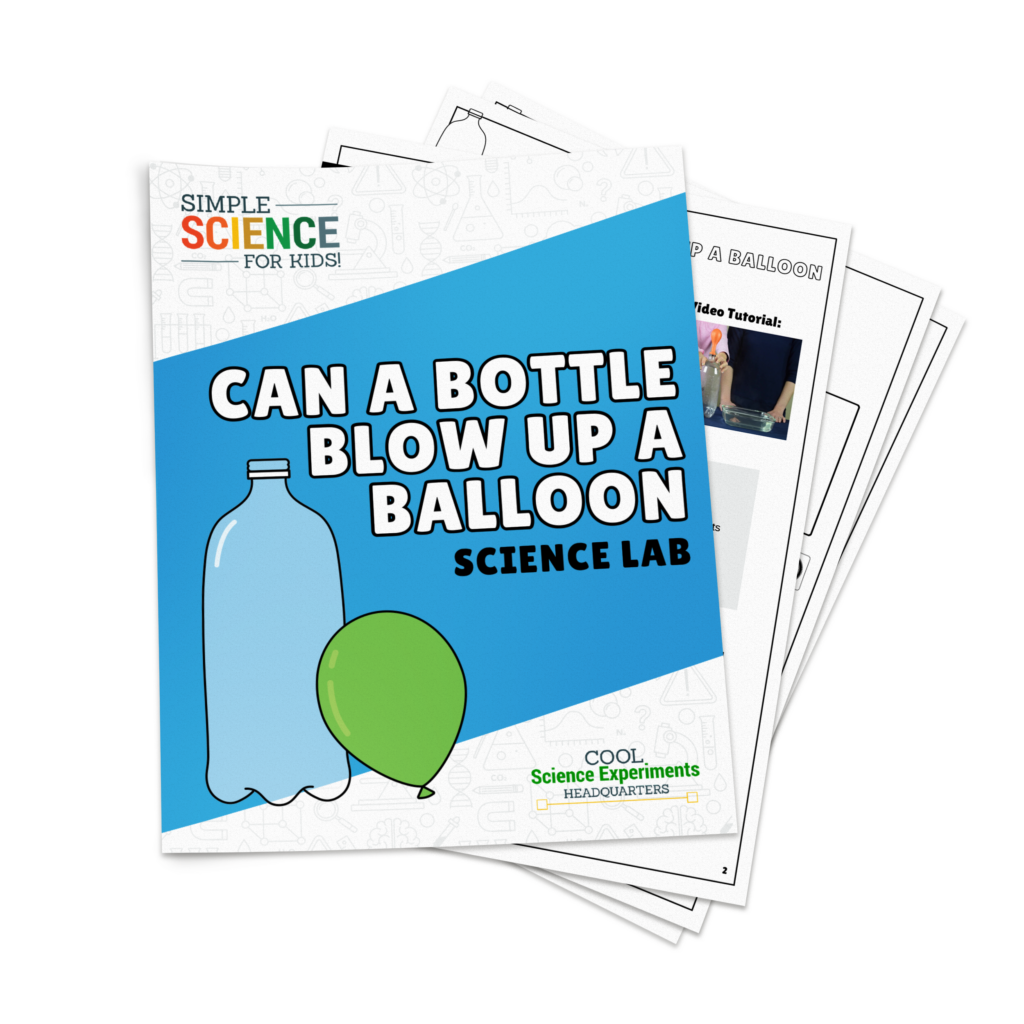

I never knew you could inflate a balloon using a bottle! My kid is having a birthday party and I have been put in charge of balloon decorations. I think my little guy will like the neat little bottle trick, thanks!
Nice experiment about the properties of matter by using the balloon.